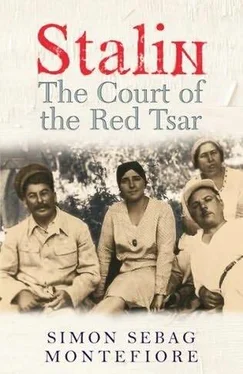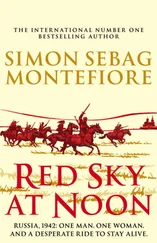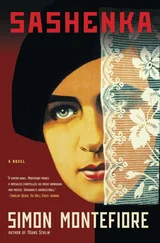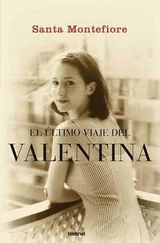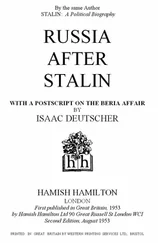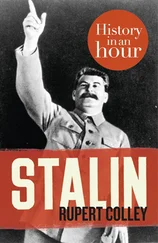Just as the grain fuelled the industrial engine, so did the peasants themselves. The same week, Stalin and Sergo, on holiday in Sochi, ordered Kaganovich and Molotov to transfer another 20,000 slave labourers, probably kulaks, to work on their new industrial city, Magnitogorsk. The repression was perhaps used deliberately to provide slave labour.
None of the great writers, like Akhmatova, Mandelstam, Pasternak, Bulgakov or Babel, were there but Sholokhov, whom Stalin regarded as “a great artistic talent,” was present.
“During the Congress I was busy with work,” he wrote to Gorky during 1930 in a friendly, confiding tone. “Now things are different and I can write. It’s not of course good, but now we have the opportunity to smooth out the fault. “No fault, no repentance, no repentance, no salvation.” They say you’re writing a play about the wreckers and you want new material. I’m gathering material and will send it to you… When are you coming to the USSR?” He treated Gorky almost as a member of the Soviet government, consulting him on Molotov’s promotion. If he was late in his replies, Stalin apologized for his “swinish” behaviour.
Voroshilov, another Bolshevik seigneur, regularly sent Yagoda aristocratic gifts: “I received the horse,” Yagoda thanked Voroshilov in one note. “It’s not just a horse but a full-blooded thoroughbred. Warmest thanks. GY.” But he was also married to revolutionary royalty: Ida, his wife, was the niece of Sverdlov, the organizing genius and first Head of State. By coincidence, Gorky had adopted Ida’s uncle. Yagoda’s brother-in-law was Leopold Averbakh, a proletarian writer, who had been Chairman of RAPP, helping to lure Gorky back to Moscow and forming one of his circle when he arrived.
The Forsyte Saga by Galsworthy and Fenimore Cooper’s Last of the Mohicans were probably the most popular foreign works for the entire Politburo, who all seemed to be reading what they analysed as a damning indictment of a capitalist family, and of British imperialist repression in the Americas.
Boris Pilniak, Russia’s most respected novelist until Gorky’s return, who had fallen into disfavour, wrote nervously to Stalin to ask if he could go abroad: “Esteemed Comrade Pilniak,” replied the leader (sarcastically, since he hated Pilniak for his short story “Tale of the Unextinguished Moon,” implying Stalin had arranged the medical murder of Defence Commissar Frunze in 1925), “Inquiries show the bodies of control are not opposed to your going abroad. They doubted it but now cease to doubt. So… your going abroad is decided. Good luck. Stalin.” Pilniak was executed on 21 April 1938.
There were chairs hidden there for those of weak disposition to take a rest, and even better, there was a room behind with a bar for those who needed Dutch courage. The first Bolshevik Head of State, Yakov Sverdlov, died in 1919 after a freezing parade; the Politburo member Alexander Shcherbakov died after attending the 1945 victory parade; the Czech President Klement Gottwald died after enduring the icy hours of Stalin’s funeral on the Mausoleum.
Maria “Marusya” Svanidze was to become a vital figure in Stalin’s entourage: her handwritten diary, which is one of the most revealing documents of the thirties, was preserved by Stalin in his own archive.
Budyonny had lost his first wife in a possible suicide, perhaps when she discovered his relationship with his future second wife, the singer Olga. Ironically the other Soviet leader whose wife had committed suicide was the brilliant commander most hated by Stalin—Mikhail Tukhachevsky.
It was therefore entirely appropriate that the Mariinsky should be renamed the Kirov after his death.
Faked car crashes, often with fatal effects, were to become a bizarre feature of Stalin’s rule.
President Putin still rules from this building, the seat of power in Russia since Lenin. Putin’s Chief of Staff works in Stalin’s old office. Until 1930, Stalin kept his main office on the fifth floor of the grey granite edifice of the Central Committee building on Old Square, up the hill from the Kremlin, where he had been well served by his successive secretaries, Lev Mekhlis, who went on to greater things, and Tovstukha, who died prematurely. It was here that Stalin planned his campaigns against Trotsky, Zinoviev and Bukharin. In 1930, Poskrebyshev and the Special Sector, the fulcrum of Stalin’s dictatorship, moved into the Yellow Palace (also known as the Sovnarkom or Council of Ministers building) where the Politburo met, Stalin worked—and now lived.
Kuntsevo was, like most of his other residences, built by Merzhanov: Stalin constantly ordered renovations and, after the war, the second floor. After his death, the contents were packed up but under Brezhnev, these were reassembled by Stalin’s reunited staff. It remains today closed up under the aegis of the FSB security organ, but exactly as it was when Stalin lived, even down to his shaving brushes and gramophone.
They saddled their son with the absurd Bolshevik name Johnreed in honour of the author of Ten Days That Shook the World .
Belomor cigarettes now became one of the most popular brands, smoked by Stalin himself when his favourite Herzogovina Flor were not to hand. The Belomor Canal was one of the triumphs that were celebrated by writers and film-makers; Gorky, the novelist who had become a shameful apologist for the worst excesses of Bolshevism, edited a book, The Canal Named for Stalin, that amazingly praised the humanitarian aspects of Belomor.
We are especially well informed on this holiday because not only do we have Stalin’s correspondence with Kaganovich, in charge in Moscow, but the GPU took photographs which they mounted in a special album for Stalin, and Lakoba, the host in Abkhazia, also kept notes: therefore we have both sound and vision.
After WW2, Stalin reminisced about how, in exile, “I, as a peasant, was given 8 roubles monthly. Ordzhonikidze as a nobleman got 12 roubles so deported noblemen cost the Treasury 50% more than peasants.” The other trained male nurse in the leadership was Poskrebyshev.
Stalin treated Sergo like an uncontrollable younger brother: “You were trouble-making this week,” Stalin wrote typically to him, “and you were successful. Should I congratulate you or not?” On another occasion: “Tomorrow, the meeting on bank reform. Are you prepared? You must be.” When Stalin scolded him, he added, “Don’t dress me down for being rude… Actually, tell me off as much as you like.” He usually signed himself “Koba.” Sergo’s notes almost always disagree with some decision of Stalin’s: “Dear Soso,” he carped in one note, “is the new Russia being built by Americans?” He was quite capable of giving Stalin instructions too: “Soso, they want to put Kaganovich on civil aviation… Write to Molotov and Kaganovich and tell them not to!”
The Gagra house is one of the most beautiful of Stalin’s residences but also the least accessible. The children later got their own houses. A snake path of steps twists down to the sea. Yet it is invisible from the land. Like most of these houses, it is still under the control of the Abkhazian presidential security, hidden, eerie but perfectly preserved. Museri adjoins the same secret CC resort, Pitsunda, where Khrushchev had a house as First Secretary and where, in the eighties, Mikhail Gorbachev and Raisa his wife were criticized for building a multi-million-pound holiday house. All remain empty yet guarded in the steamy Abkhazian heat.
Читать дальше
